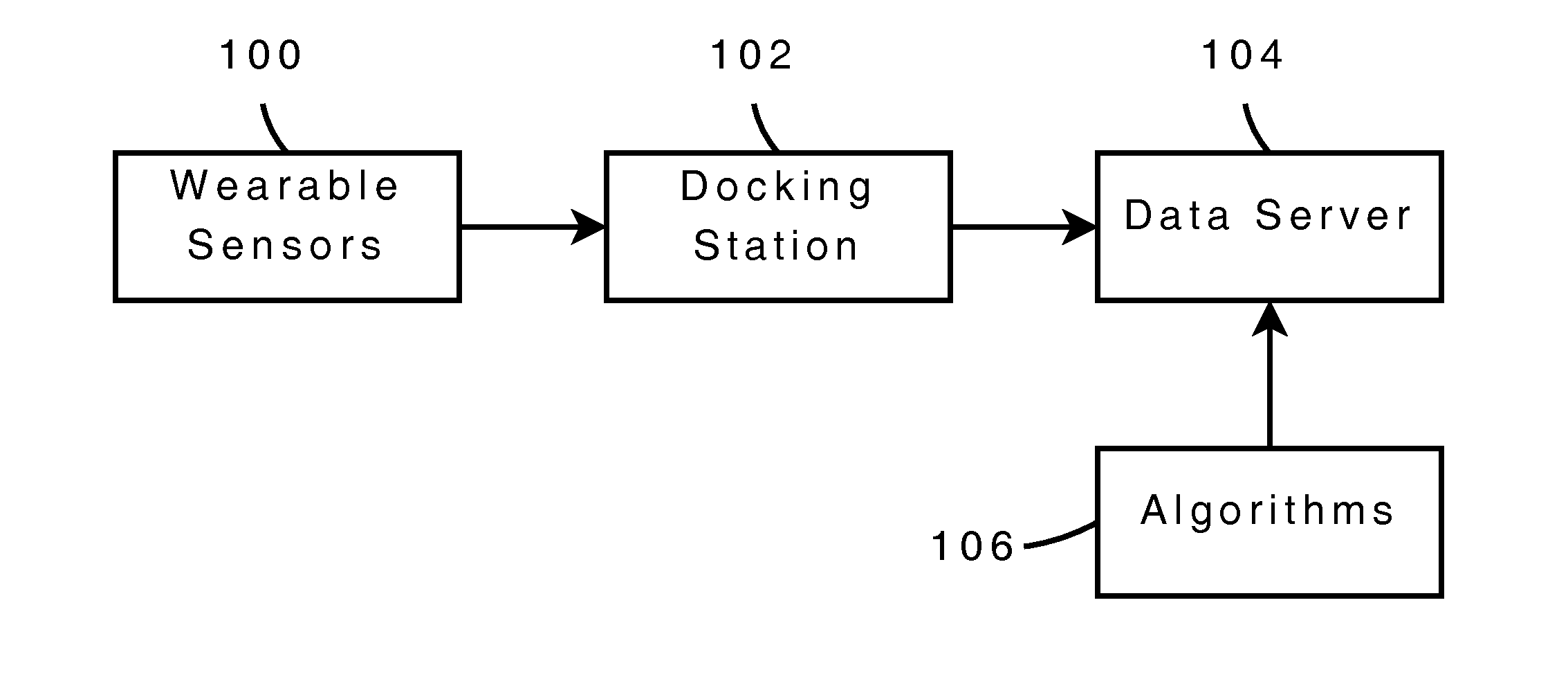System and Apparatus for Continuous Monitoring of Movement Disorders
a technology for movement disorders and monitoring systems, applied in the field of physiologic monitoring of movement, can solve the problems of inability to monitor movement disorders in ambulatory settings, inability to monitor movement disorders in continuous mode, and inability to measure non-subtle symptoms
- Summary
- Abstract
- Description
- Claims
- Application Information
AI Technical Summary
Problems solved by technology
Method used
Image
Examples
Embodiment Construction
[0019]A. System Components
[0020]According to one embodiment, as shown in FIG. 1 the system for continuous ambulatory monitoring of movement disorders comprises: one or more wearable devices 100, one or more docking stations 102 connected to a plurality of access points, one or more data servers 104, and a plurality of statistical and signal processing analysis methods 106 to process the movement data collected by the wearable devices and generate a plurality movement metrics.
[0021]B. Wearable Devices: Movement Monitors
[0022]According to one embodiment the wearable movement monitor 100 is a lightweight device (4 GB) in order to enable for multi-day (>2 days) local storage of movement monitoring data at high frequencies sampling frequencies (>20 Hz). In one embodiment, the communication module is designed to communicate with a plurality of wearable movement monitors (peer-to-peer communication) in order to synchronize the monitors, and to communicate with a host computer (peer-to-host...
PUM
 Login to View More
Login to View More Abstract
Description
Claims
Application Information
 Login to View More
Login to View More - R&D
- Intellectual Property
- Life Sciences
- Materials
- Tech Scout
- Unparalleled Data Quality
- Higher Quality Content
- 60% Fewer Hallucinations
Browse by: Latest US Patents, China's latest patents, Technical Efficacy Thesaurus, Application Domain, Technology Topic, Popular Technical Reports.
© 2025 PatSnap. All rights reserved.Legal|Privacy policy|Modern Slavery Act Transparency Statement|Sitemap|About US| Contact US: help@patsnap.com



